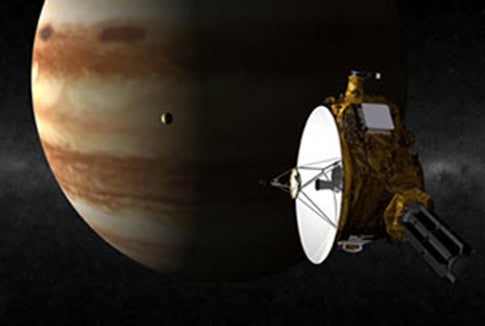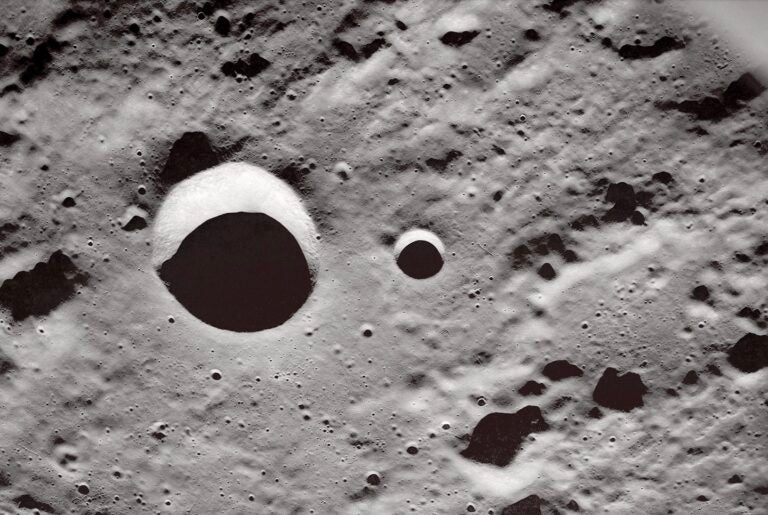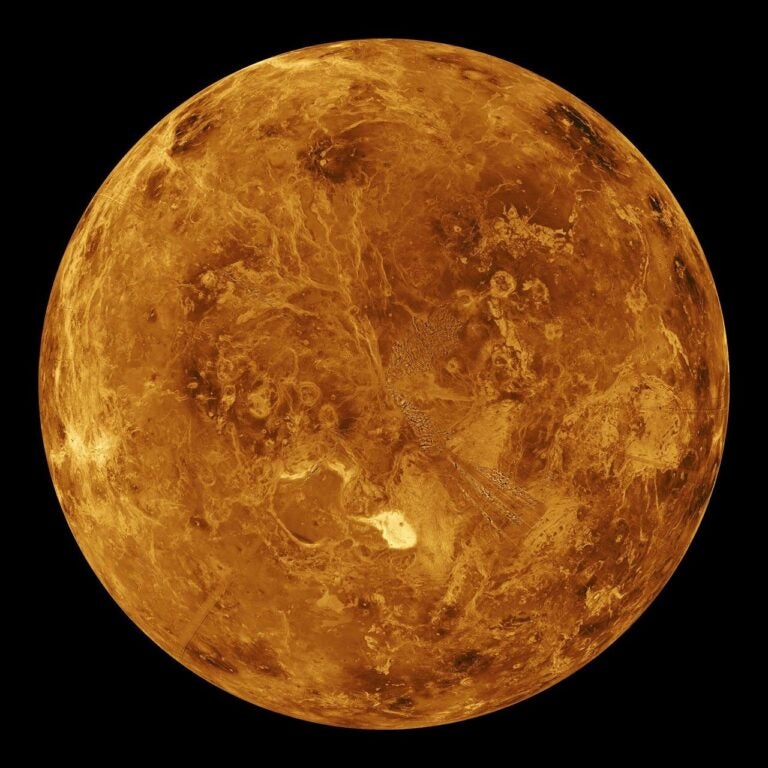NASA’s New Horizons spacecraft is on the doorstep of the solar system’s largest planet. The spacecraft will study and swing past Jupiter, increasing speed on its voyage toward Pluto, the Kuiper Belt and beyond.
The fastest spacecraft ever launched, New Horizons will make its closest pass to Jupiter on Feb. 28, 2007. Jupiter’s gravity will accelerate New Horizons away from the sun by an additional 9,000 miles per hour, pushing it past 52,000 mph and hurling it toward a pass through the Pluto system in July 2015.
“Our highest priority is to get the spacecraft safely through the gravity assist and on its way to Pluto,” says New Horizons Principal Investigator Alan Stern, of the Southwest Research Institute, Boulder, Colorado. “We also have an incredible opportunity to conduct a real-world encounter stress test to wring out our procedures and techniques, and to collect some valuable science data.”
The New Horizons mission team will use the flyby to put the probe’s systems and seven science instruments through the paces of more than 700 observations of Jupiter and its four largest moons. The planned observations from January through June include scans of Jupiter’s turbulent, stormy atmosphere; a detailed survey of its ring system; and a detailed study of Jupiter’s moons.
The spacecraft also will take the first-ever trip down the long “tail” of Jupiter’s magnetosphere, a wide stream of charged particles that extends tens of millions of miles beyond the planet, and the first close-up look at the “Little Red Spot,” a nascent storm south of Jupiter’s famous Great Red Spot.
Much of the data from the Jupiter flyby will not be sent back to Earth until after the spacecraft’s closest approach to the planet. New Horizons’ main priority during the Jupiter close approach phase is to observe the planet and store data on its recorders before orienting its main antenna to transmit information home beginning in early March.
“Since launch, New Horizons will reach Jupiter faster than any of NASA’s previous spacecraft and begin a year of extraordinary planetary science to complement future exploration activities,” says Jim Green, acting director, Planetary Science Division, NASA headquarters, Washington.
New Horizons has undergone a full range of system and instrument checkouts, instrument calibrations, flight software enhancements, and three propulsive maneuvers to adjust its trajectory.
After an eight-year cruise from Jupiter across the expanse of the outer solar system, New Horizons will conduct a five-month-long study of Pluto and its three moons in 2015. Scientific research will include studying the global geology, mapping surface compositions and temperatures, and examining Pluto’s atmospheric composition and structure. A potential extended mission would conduct similar studies of one or more smaller worlds in the Kuiper Belt, the region of ancient, rocky, icy planetary building blocks far beyond Neptune’s orbit.










